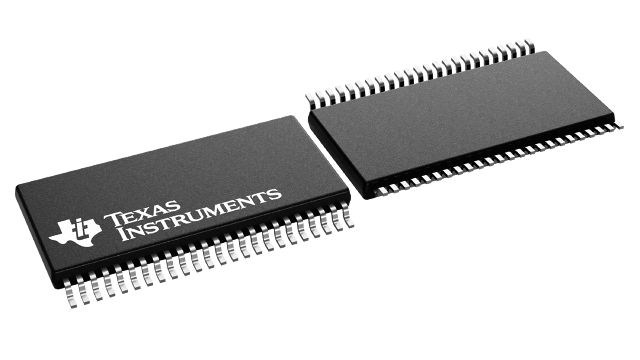Gehäuseinformationen
| Gehäuse | Pins TSSOP (DGG) | 48 |
| Betriebstemperaturbereich (°C) -40 to 85 |
| Gehäusemenge | Träger 38 | TUBE |
Merkmale von SCANSTA111
- True IEEE 1149.1 Hierarchical and Multidrop Addressable Capability
- The 7 Slot Inputs Support Up to 121 Unique Addresses, an Interrogation Address, Broadcast Address, and 4 Multi-Cast Group Addresses (Address 000000 is Reserved)
- 3 IEEE 1149.1-Compatible Configurable Local Scan Ports
- Mode Register0 Allows Local TAPs to be Bypassed, Selected for Insertion Into the Scan Chain Individually, or Serially in Groups of Two or Three
- Transparent Mode can be Enabled with a Single Instruction to Conveniently Buffer the Backplane IEEE 1149.1 Pins to those on a Single Local Scan Port
- LSP ACTIVE Outputs Provide Local Port Enable Signals for Analog Busses Supporting IEEE 1149.4.
- General Purpose Local Port Pass-Through Bits are Useful for Delivering Write Pulses for FPGA Programming or Monitoring Device Status.
- Known Power-Up State
- TRST on All Local Scan Ports
- 32-Bit TCK Counter
- 16-Bit LFSR Signature Compactor
- Local TAPs can become TRI-STATE via the OE Input to Allow an Alternate Test Master to Take Control of the Local TAPs (LSP0-2 Have a TRI-STATE Notification Output)
- 3.0-3.6V VCC Supply Operation
- Power-Off High Impedance Inputs and Outputs
- Supports Live Insertion/Withdrawal
All trademarks are the property of their respective owners.
Beschreibung von SCANSTA111
The SCANSTA111 extends the IEEE Std. 1149.1 test bus into a multidrop test bus environment. The advantage of a multidrop approach over a single serial scan chain is improved test throughput and the ability to remove a board from the system and retain test access to the remaining modules. Each SCANSTA111 supports up to 3 local IEEE 1149.1 scan rings which can be accessed individually or combined serially. Addressing is accomplished by loading the instruction register with a value matching that of the Slot inputs. Backplane and inter-board testing can easily be accomplished by parking the local TAP Controllers in one of the stable TAP Controller states via a Park instruction. The 32-bit TCK counter enables built in self test operations to be performed on one port while other scan chains are simultaneously tested.
